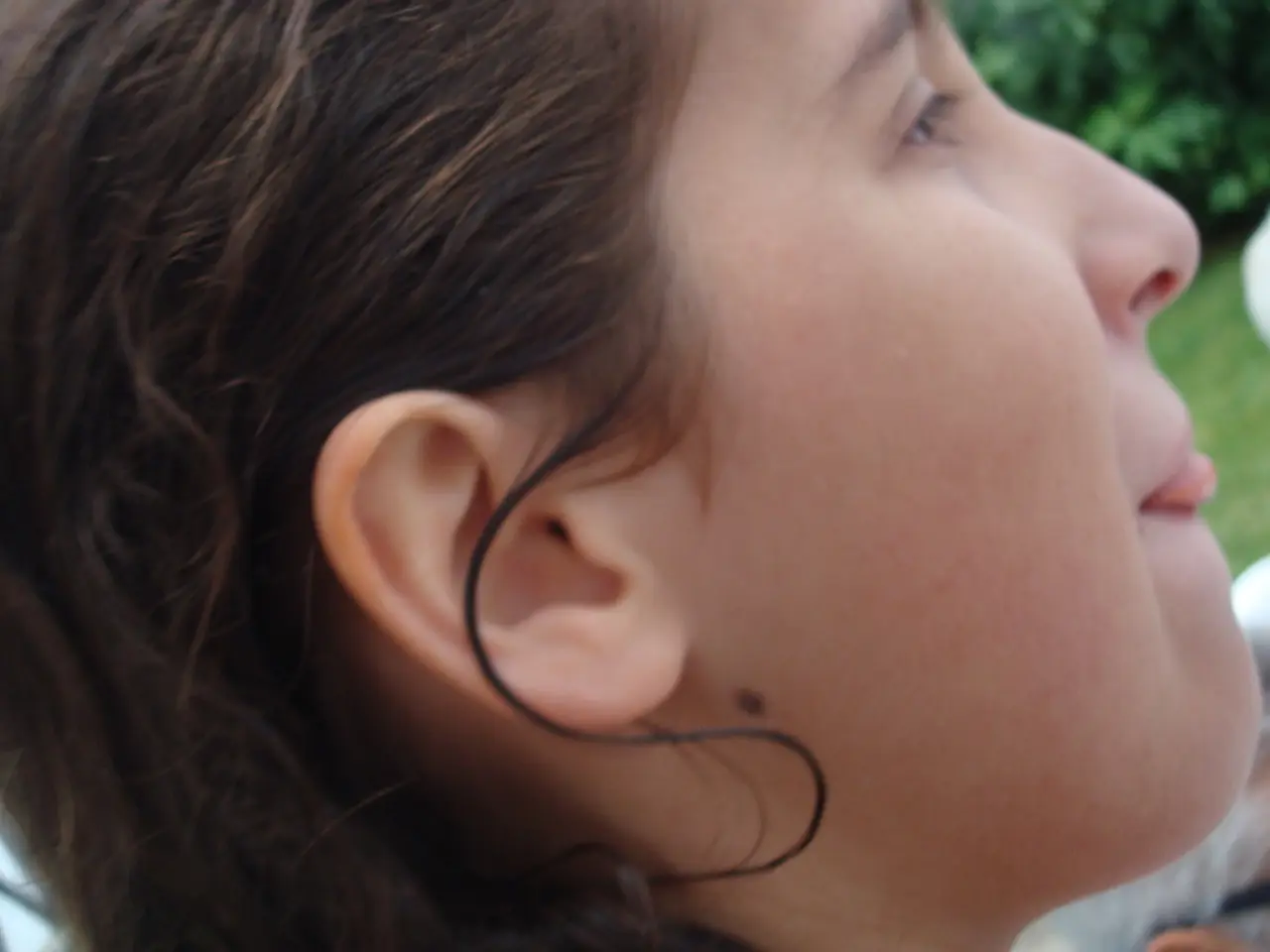Differences and Comparisons Between Skin Tags and Moles
Skin tags and moles are common skin growths that can develop anywhere on the body. While they may seem similar, they are distinct types of growths.
Characteristics of Skin Tags and Moles
Skin tags are usually between 2 and 50 mm in size, often flesh-coloured, and can be found on various parts of the body, such as the neck, underarms, eyelids, groin, and underneath breasts [1]. They are usually harmless, but growing many of them may indicate an underlying illness [2]. Skin tags consist of fat cells, nerve cells, and collagen fibers [3].
Moles, on the other hand, are growths of pigment-forming cells called melanocytes. They are typically one colour: brown, pink, red, black, blue, tan, or skin tone. Moles are usually smaller than 6 mm and can be flat or slightly raised [4].
Identifying Atypical Moles
The "ABCDE" method can be used to identify whether a mole may be atypical or cancerous. Atypical moles are asymmetrical, have an irregular border, and can be made up of more than one colour or shade. They may also be larger than 6 mm and change over time [5].
Removal Methods for Skin Tags and Moles
Skin tag and mole removal methods differ in terms of the procedure, duration, and potential risks. Here's a breakdown of common methods and their associated risks:
1. Cryotherapy
- Procedure: Uses liquid nitrogen to freeze the skin tag or mole, causing it to fall off within days or weeks.
- Duration: Typically a few minutes per tag.
- Risks: May lead to blistering, scarring, or pigmentation changes. It is relatively painless but can cause temporary discomfort [6][3].
2. Electrosurgery (Cauterization)
- Procedure: Involves using a focused electric current to burn off the tag or mole.
- Duration: Less than 15 minutes per tag.
- Risks: May require local anesthesia. Risks include infection, scarring, or changes in skin pigmentation [1][2].
3. Ligation
- Procedure: Tying off the skin tag with surgical thread to cut off blood supply.
- Duration: The tag typically falls off within a week.
- Risks: Minimal, but may cause irritation at the ligation site [1].
4. Excision
- Procedure: Surgical removal with a scalpel or scissors under local anesthesia.
- Duration: 15-30 minutes per tag, depending on size.
- Risks: Includes infection, scarring, and potential for discomfort [1][2].
5. Laser Surgery
- Procedure: Precise removal using a laser, often preferred for its speed and minimal scarring.
- Duration: Just a few minutes.
- Risks: May include infection, scarring, or changes in pigmentation if not properly cared for [1][3].
Risks and Considerations
- Infection: All methods carry a risk of infection if not properly cared for post-procedure.
- Scarring: Excision and cauterization may lead to noticeable scars, while laser treatment and cryotherapy generally result in minimal scarring.
- Pigmentation Changes: Possible with all methods, especially laser and cryotherapy.
- Bleeding: Common with excision and cauterization.
- Irritation: Can occur with ligation and certain at-home removal methods.
Distinguishing Between Moles and Skin Tags
- Moles are typically pigmented, flat or raised, and vary in colour and size.
- Skin Tags are usually flesh-coloured, soft, and hang off the skin by a narrow stalk [7].
Home Removal Risks
Removing skin tags or moles at home can pose risks of scarring, infection, irritation, or bleeding. It is advisable to avoid home removal methods, especially around sensitive areas like the eyes or genitals [8].
If you notice new skin growths, changes in an existing mole or skin growth, or irregularities according to the ABCDE system, it is essential to contact a doctor for a professional evaluation. In some cases, moles may be skin cancer, the most serious of which is melanoma. A dermatologist or doctor can diagnose skin tags or moles through visual examination and may use photographic imaging or microscopic tools to examine the growth more closely. If a doctor suspects skin cancer, they may request a biopsy.
- Atypical moles, potentially indicating medical conditions, might exhibit characteristics such as asymmetry, irregular borders, and being composed of more than one color or shade, in contrast to common moles.
- Skin tags, distinct from moles, are typically flesh-colored, hang off the skin by a narrow stalk, and range between 2 and 50 mm in size, unlike moles which are usually smaller and can be flat or slightly raised.
- Skin-care routines for skin conditions like moles and skin tags often involve various professional removal methods such as cryotherapy, electrosurgery, ligation, excision, or laser surgery, each having unique characteristics, risks, and potential outcomes for health-and-wellness.




